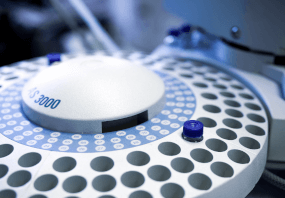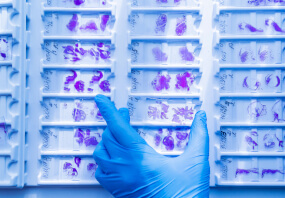General description
Chloramphenicol acetyltransferase (UniProt: P62577; also known as EC:2.3.1.28, CAT) is encoded by the Cat gene (Gene ID: 59683728) in E. coli. Chloramphenicol acetyltransferase is an enzyme that catalyzes the acetyl-S-CoA-dependent acetylation of chloramphenicol at the 3-hydroxyl group leading to the production of 3-acetoxy chloramphenicol that does not bind to bacterial ribosomes and does not inhibit peptidyltransferase activity. It displays high stability in cells and has a half-life of about 48 hours. A highly reactive histidine residue has been implicated in the catalytic mechanism. CAT is shown to be an effector of chloramphenicol resistance in bacteria. Its synthesis is shown to be constitutive in E. coli and other Gram-negative bacteria that harbor plasmids bearing the structural gene for the enzyme. However, in Gram-positive bacteria such as staphylococci and streptococci it is synthesized only in the presence of chloramphenicol and related compounds. (Ref.:Shaw WH. (1983). CRC Crit. Rev. Biochem. 14(1); 1-46).
This mouse monoclonal Anti-Chloramphenicol Acetyltransferase, clone CAT-1, Cat. No. MAB3678-I is tested for use in Immunocytochemistry and Western Blotting and Immunofluorescence, for the detection of Chloramphenicol acetyltransferase.
Specificity
Clone CAT-1 is a mouse monoclonal antibody that detects Chloramphenicol acetyltransferase.
Immunogen
Full-length recombinant chloramphenicol acetyl transferase.
Application
Quality Control Testing
Evaluated by Immunocytochemistry in HEK293 cells transfected with gWIZ CAT plasmid.
Immunocytochemistry Analysis: A 1:500 dilution of this antibody detected Chloramphenicol Acetyltransferase in HEK293 cells transfected with gWIZ CAT plasmid.
Tested Applications
Immunofluorescence Analysis: A representative lot detected Chloramphenicol acetyltransferase in Immunofluorescence applications (Markus, B.M., et al. (2019). mSphere.;4(3):e00386-19).
Western Blotting Analysis: A representative lot detected Chloramphenicol acetyltransferase in Western Blotting applications (Smith, M.C., et al. (2011). Antiviral Res.;91(3):259-66; Markus, B.M., et al. (2019). mSphere.;4(3):e00386-19).
Note: Actual optimal working dilutions must be determined by end user as specimens, and experimental conditions may vary with the end user
Physical form
Purified mouse monoclonal antibody IgG1 in buffer containing 0.1 M Tris-Glycine (pH 7.4), 150 mM NaCl with 0.05% sodium azide.
Storage and Stability
Recommend storage at +2°C to +8°C. For long term storage antibodies can be kept at -20°C. Avoid repeated freeze-thaws.
Other Notes
Concentration: Please refer to the Certificate of Analysis for the lot-specific concentration.
Disclaimer
Unless otherwise stated in our catalog or other company documentation accompanying the product(s), our products are intended for research use only and are not to be used for any other purpose, which includes but is not limited to, unauthorized commercial uses, in vitro diagnostic uses, ex vivo or in vivo therapeutic uses or any type of consumption or application to humans or animals.
- UPC:
- 12352200
- Condition:
- New
- Availability:
- 3-5 Days
- Weight:
- 1.00 Ounces
- HazmatClass:
- No
- MPN:
- MAB3678-I-25UL












